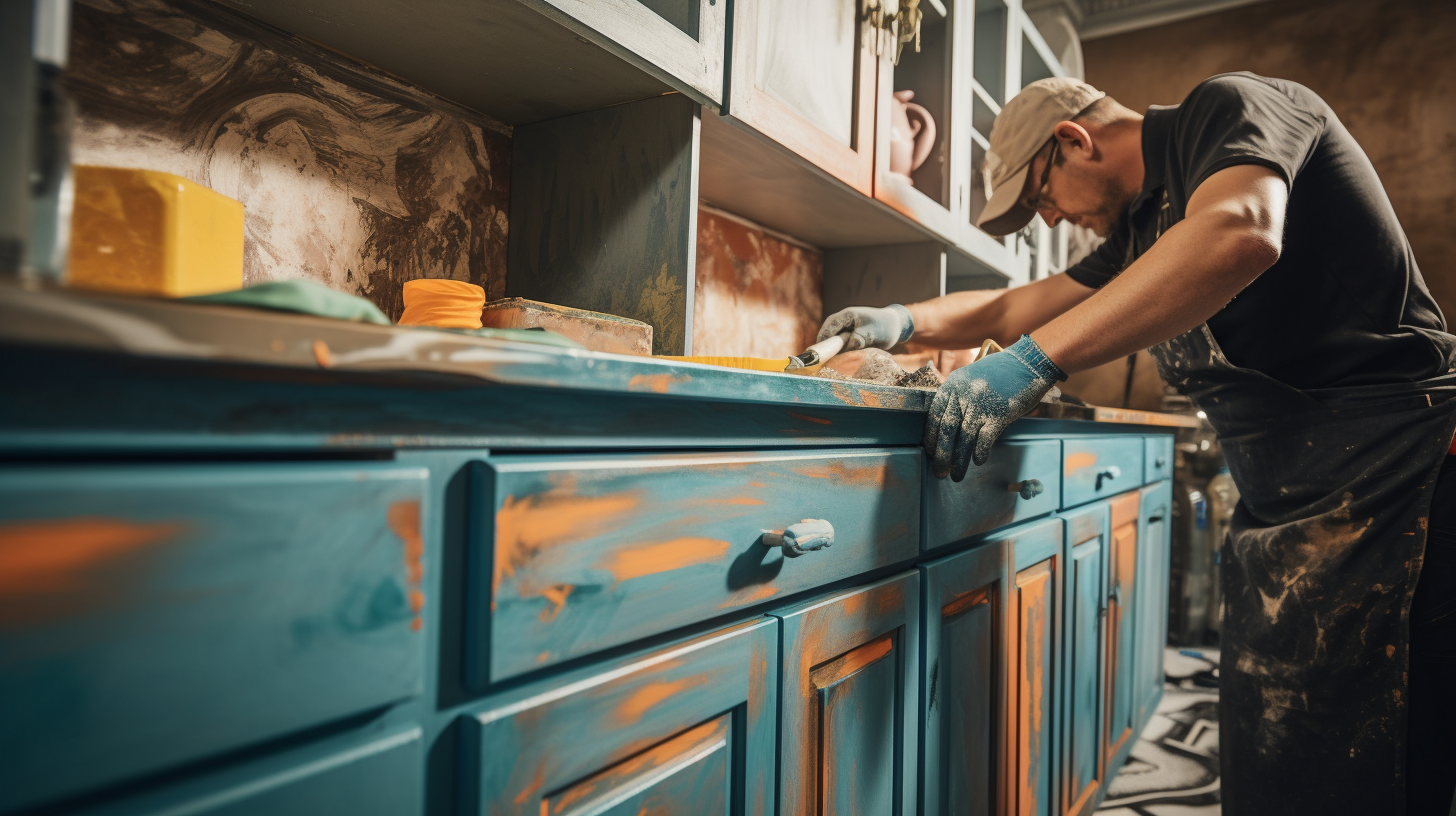Are your kitchen cupboards in need of a fresh new look? Painting them is a great way to transform the entire look and feel of your kitchen without breaking the bank. But before you can start painting, it's important to properly prepare your cupboards to ensure a smooth and long-lasting finish.
In this article, we will guide you through the step-by-step process of how to prepare your kitchen cupboards for painting.
The first step in preparing your kitchen cupboards for painting is removing any hardware and doors. Take off all knobs, handles, hinges, and other accessories from the cabinets. This will make it easier for you to clean and sand the surfaces later on.
Next, thoroughly clean the cupboards using a mild detergent or degreaser to remove any dirt or grime that may have built up over time. Once they are clean, lightly sand the surfaces with fine-grit sandpaper to create a rough texture that will help the paint adhere better.
By following these initial steps, you'll be well on your way to achieving professional-looking painted kitchen cupboards.
Key Takeaways
- Choose the appropriate painting technique based on the size and precision required for the area.
- Consider the impact of color selection on the overall look and style of the kitchen.
- Apply a protective finish, such as high-quality polyurethane or varnish, to ensure the longevity and appearance of the painted cupboards.
- Take proper care during the application of sealant and buffing to maintain the durability and visual appeal of the cupboards.
Removing Cabinet Hardware and Doors
Now it's time for you to remove those cabinet hardware and doors, giving your kitchen cupboards a fresh canvas to work with. Start by prepping the surfaces before taking off any hardware or doors. Use a degreaser or a mild detergent to clean the cabinets thoroughly, making sure to remove any dirt, grease, or grime that may have accumulated over time. This step is essential as it ensures proper adhesion of the new paint and prevents any old paint from peeling off later. Once the surfaces are clean, you can begin removing the old paint from the cabinet doors and drawer fronts. Depending on the type of paint used previously, you may need to use different methods such as sanding or using a chemical stripper. If there's only a thin layer of paint or varnish on the surface, sanding with medium-grit sandpaper should suffice. However, if there are multiple layers of thick paint, a chemical stripper might be necessary for easier removal. After removing the old paint and ensuring that all surfaces are smooth and even, it's time to transition into cleaning and sanding the surfaces further. This step involves using fine-grit sandpaper to lightly sand all areas that will be painted. Sanding helps create a rough texture on the surface, allowing better adhesion for your new coat of paint. Remember to wipe away any dust generated from sanding before moving forward with painting preparations. By taking these initial steps of prepping surfaces and removing old paint through cleaning and sanding techniques, you're now ready to move onto preparing your kitchen cupboards for their fresh coat of color.Cleaning and Sanding the Surfaces
To properly ready the surfaces, you'll need to make sure they are thoroughly cleaned and sanded. Prepping the surfaces is a crucial step in preparing kitchen cupboards for painting. Start by removing any dirt, grease, or grime from the cabinet doors and frames. Use a mild detergent mixed with warm water and a sponge or cloth to scrub away any buildup. Pay special attention to areas near the stove or sink where grease tends to accumulate. Once clean, rinse off any soap residue and allow the surfaces to dry completely. After cleaning, sanding is essential to achieve a smooth and even finish on your kitchen cupboards. Sanding helps remove any existing paint or varnish that could hinder adhesion of the new paint. It also helps create a rough surface that allows better paint adherence. Use medium-grit sandpaper (around 120-150 grit) and sand in the direction of the wood grain. Be sure to wear protective goggles and a dust mask when sanding to avoid breathing in dust particles. Thoroughly prepping surfaces by cleaning and sanding ensures that the new paint will adhere properly and provide long-lasting results. After completing this step, you can move on to filling in any holes or imperfections before applying primer and paint. This next section will guide you through filling in these areas seamlessly without leaving noticeable blemishes on your kitchen cupboards.Filling in any Holes or Imperfections
Once you've cleaned and sanded the surfaces, it's time to tackle any holes or imperfections in your cabinet doors and frames. Here are three steps to help you repair scratches and smooth out rough surfaces:- Fill in the holes: Start by filling any visible holes with wood filler. Use a putty knife to apply the filler, making sure to fill the hole completely. Once applied, smooth out the surface using the putty knife or sandpaper. Allow the filler to dry according to the manufacturer's instructions before moving on.
- Repair scratches: To repair scratches, use a wood touch-up marker that matches the color of your cabinets. Apply the marker directly onto the scratch, following its direction. Then use a clean cloth to gently rub over it, blending it into the surrounding area. If there are deeper scratches, you may need to use wood putty instead of a marker.
- Smooth out rough surfaces: After filling in holes and repairing scratches, it's important to ensure that all surfaces are smooth before painting. Use fine-grit sandpaper or a sanding block to gently sand down any rough areas or uneven patches on your cabinets. Be careful not to oversand and remove too much material.
